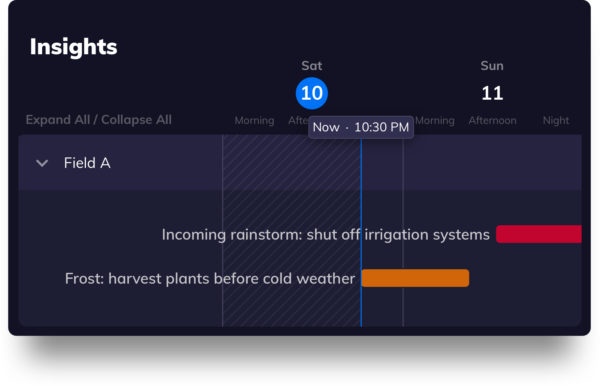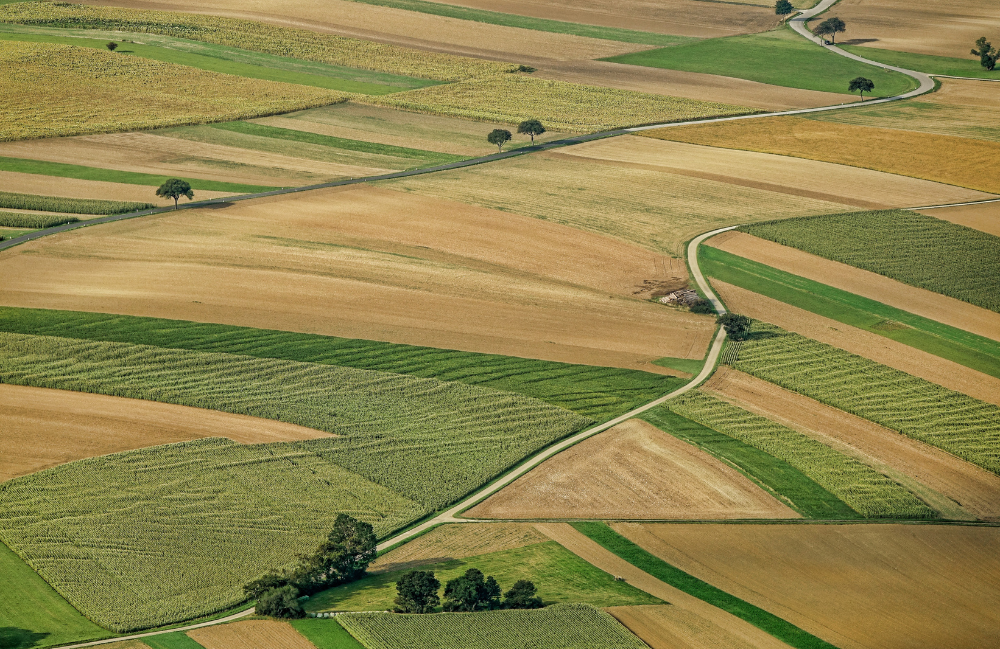Farmers today are flooded with data about everything — including the weather — but many still struggle to gain insights into how and when they should act.
- Does next week’s projected rainfall mean you should adjust irrigation levels today?
- Does it make sense to plant a week early because of rising temperatures?
- Or will there be an early freeze this fall that kills crops if you wait too long?
Even just one mistake adjusting to the weather could lead to disastrous results for crop yields and massive losses for the farm.
With demand on the rise and the entire agriculture supply chain under enormous pressure, adapting to the weather quickly is more important than ever.
Growers are struggling to balance this increase in demand with a lack of labor, the changing climate, and the uncertainty of everyday work. What they need is someone to make the decision-making process easier.
That’s where agriculture technology is stepping up to solve real problems on a daily basis. Rather than just offering the forecast, farmers need to understand the impact of weather on their everyday operations to maximize yield and improve crops.
Here’s why more farmers today are looking for weather-driven insights.
Billions Lost by Farmers Each Day
What happens when growers cannot adapt or adjust to weather conditions quickly and effectively? It’s simple.
Crop yields drop and losses rise — no matter what the weather:
- Drought and heat damage cause an estimated $17 billion worth of crop loss in the US each year
- If crops are hit with an early freeze in the fall, yield losses can cost US farmers up to $28.6 billion
- In 2019 alone, flooding prevented farmers from planting more than 19.4 million acres of cropland
With numbers like that, it’s no wonder that farmers are looking to gain better insights into how the weather will impact them today, tomorrow, and in the future. But not all weather data is created equally.
Most forecasts simply tell you what’s happening in the next few weeks. While that’s useful, it’s not enough data to help farmers adapt to the weather quickly and effectively. You need to make the right decisions around:
- On-time irrigation: Yield and plant health is hurt long-term if you don’t water on time, wasting the nearly $2.2 billion that US farmers spend on irrigation annually
- Fertilizer choice: Use the right fertilizer for the soil, water table, and environment, which could save up to $500 million in wasted fertilizer costs
- Timing of planting and harvesting: Farmers face yield losses up to 20% if the weather isn’t right for specific crops
For farmers, there is no second chance to get the weather right. The choices you make today either lead to a great crop, or could ruin a dramatic percentage of your yield.
Guiding Farmers with In-Depth Insights
Many farmers today are starting to use drones or satellites to understand the weather. However, the challenge is that at best, you get data once a day or only after the weather event has occurred.
And with much of the agriculture management software, farmers have to add in weather data manually — hardly any data is collected automatically.
What farmers actually need is better predictions and the ability to make a decision accurately and on time.

This type of dashboard is amazingly powerful because it takes in complicated weather data, analyzes vast amounts of variables, and then streamlines it to the grower with a simple, easy to understand platform that offers one specific decision.
It tells the farmer: Irrigate this amount at this time. Fertilize at this time. Harvest at this time.
The farmer doesn’t need to worry about why it works — they just know that it works. And it increases crop yield and results every time.
Get Better Results with Better Weather Insights
By acting on weather in a timely manner, farmers will gain:
- Reliable production: Don’t have massive swings in production from year to year. Maintain your yield and better adapt to the changing weather.
- Improve crop quality: Get more consistent, better product that buyers won’t return because of low quality, saving farmers $80 billion in wasted food.
- More yield with less resources: Even small farms without a huge team of scientists will be able to understand the weather data and get great results.
- Keep up with market demands: Be able to ramp up your operations to keep up with the market, which is forecasted to increase net farm income by $3.1 billion in 2020
- Gain a competitive advantage: Take the opportunity to use technology that your competitors may not have.


